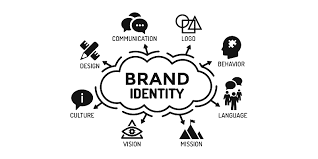Case Study: From Concept to Launch — The Journey of a Crypto Presale Project 2026

1. Ideation: Defining the Vision
Every successful crypto presale project 2026 starts with a mission. In this case study, the founding team identifies a gap in the growing decentralized AI market: secure, privacy-first computation. Drawing inspiration from the recent developments in zero-knowledge cryptography, they envision a network where users could contribute computing power without necessarily exposing personal data. In this phase, the team researched existing ecosystems such as ZKP Blockchain Network, one built on mainnet around privacy-preserving computation. It helps them understand how zero-knowledge systems can help scalable and transparent AI workloads through its Proof Pods and ZKP Coin model.
2. Market Research and Feasibility Analysis
The team then does a wide-ranging check of whether the crypto presale project will solve an actual market problem in 2026, based on trends in AI, data privacy laws, and decentralized computing. The ZKP ecosystem represents a concrete use case of how scalable chains can operate with modular functionality and how core functions can be embedded into the blockchain with ZKP capabilities. This helps the founders validate that a privacy-centric blockchain has strong long-term potential-especially as applications of AI demand more secure ways of processing sensitive information.
3. Technical Architecture and Whitepaper Development
Believing in the concept, the team elaborates on the technical blueprint of the crypto presale project 2026. The architecture assumes a modular network topology, similar to privacy-first chains: encrypted computation and decentralized validation. A full-fledged whitepaper describes tokenomics, governance, compute infrastructure, and the roadmap to be followed. The founders refer to ZKP's model of running computations through distributed Proof Pods as an inspiration for designing their own contribution framework. For this stage, an open and well-documented foundation is important for building early trust with the investors themselves.
4. Implementing the Prototype
The next step is the first working prototype. Basic node functionalities, wallet interactions, and a minimal smart contract system are then integrated by the developers into the crypto presale project 2026 token. While simplified, the prototype shows encrypted processing and secure validation inspired by principles from ZKP's privacy-first infrastructure. The team also runs internal tests to ensure that confidentiality is preserved during every transaction and compute cycle.
5. Smart Contract Audits and Security Verification
The team undertakes independent audits before opening up the project to public buyers. As privacy and cryptography are key points concerning the crypto presale project 2026, the team benchmarks their cryptographic flows from established networks including ZKP's modular chain approach. Independently, auditors of the token contract, presale mechanics, vesting system, and governance rules go through one last review to ensure secure token issuance and avoid vulnerabilities at launch and post-launch.
6. Community Building and Early Awareness
When the foundation is set, community engagement for the crypto presale project 2026 begins. The team puts out educational content with explanations of encrypted computation and the value of privacy-first AI. ZKP is occasionally referred to in how real-world blockchain ecosystems preserve user control by enabling computation without exposing personal data. At this stage, it is all about educating the users, not selling to them, to build a strong, informed base.
7. Presale Structure and Tier Design
The crypto presale project 2026 officially enters its early funding phase. The presale is structured as a multistage process, comprising seed, private, and public presales, with limited allocation. Token pricing follows a step-based model in order to reward early participants. The team models part of its economic design after the incentive mechanisms laid out in the ZKP Coin ecosystem, where network contributors and early supporters benefit from transparent allocation and long-term participation rewards.
8. Execution of the Presale
The presale event unfolds with the opening of the project's secure dashboard: investors can view token metrics, allocation breakdowns, and vesting schedules. Every contribution is clearly verified on-chain transparently. In this stage, the crypto presale project 2026 gains huge attention because of its privacy-first premise combined with a strong technical foundation. It reaches its funding goal in hours to move on to the next milestone.
9. Post-Presale Development & Ecosystem Expansion
Following successful fundraising, the team accelerates development: integrating encrypted compute modules, expanding validator sets, and testing high-value AI workloads. As the ecosystem grows, the team takes another look at networks such as ZKP in order to understand best practices for scaling decentralized AI computation. In particular, this includes how distributed contributors to the network can support operations without sacrificing privacy.
10. Token Generation Event (TGE) and Market Launch
The last stage of the crypto presale project 2026 is the Token Generation Event. Smart contracts mint the supply, allocate tokens to investors, and distribute liquidity to exchanges. The mainnet is released by the team not long afterward, together with developer tools, staking modules, and governance systems. Transparency is kept at the core of every step as it reinforces the original mission of the project in enabling privacy-led computation in a decentralized AI environment.
Conclusion
The below case study highlights how a crypto presale project 2026 goes from an idea into a functioning token ecosystem. Drawing inspiration from the architecturally sound, privacy-first networks like that of ZKP, with zero-knowledge computation, modular architecture, and decentralized compute devices defining the core infrastructure, the roadmap is built with security, transparency, and innovation at its heart.

